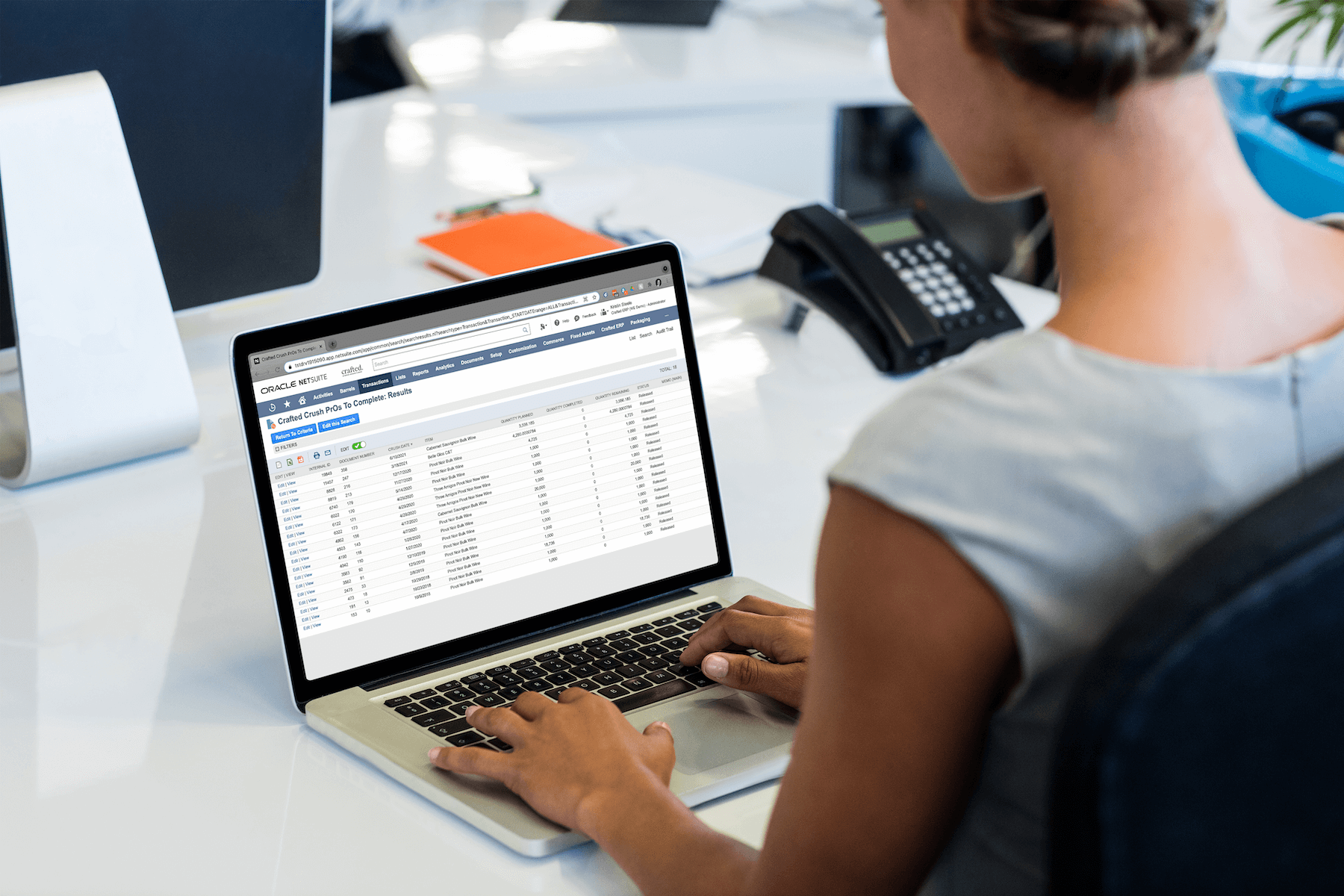Today, organizations are increasingly realizing the significance of effective data management in their operations. With accurate, real-time data at their disposal, businesses can make informed decisions, leverage opportunities promptly and improve overall efficiency. Specifically, when it comes to enterprise resource planning (ERP) implementations, data quality and management play a pivotal role.
An ERP system is the heart of any business operation. And data is the lifeblood that flows through it. However, data migration, a critical step in ERP implementation success, is often undervalued and overshadowed by other elements of the process. What many fail to understand is that mishandling data migration can spell disaster and lead to overruns in both the budget and time allocated for the project. Due to the integrated nature of ERP systems, bad data can have cascading effects and cause an array of issues from operational disruptions to customer dissatisfaction.
Understanding the Importance of Data Preparation
Data preparation is a fundamental phase in ERP implementation that involves extracting data from the existing systems, cleaning it and formatting it to suit the new ERP environment. While it can be time-consuming, its importance cannot be overstated. Proactively managing data migration ensures minimal downtime at go-live and reduces the duration of operational disruption.
The Common Challenges in ERP Data Migration
Despite its significance, data preparation for ERP implementation is typically fraught with challenges. Many organizations grapple with data spread across multiple platforms, formatted in various ways. The task may seem daunting, but is worth the long-term business gains you’ll achieve from an ERP solution.
To avoid ERP implementation failure, there are key strategies you can follow to help efficiently and effectively prep your data for ERP migration. The goal is to ensure that the right staff is involved and that all deadlines are mutually agreed upon – and met.

Evaluate and Cleanse Existing Data
Every successful ERP data migration begins with a thorough examination and cleansing of the existing data. This process is needed to ensure that the new ERP system delivers accurate, real-time and meaningful business insights, which is the catalyst for growth.
Identifying and Eliminating Duplicate Data
If members of your team have ever complained about finding duplicate records in the database or stumbling upon old, outdated data, they’ve already identified one of the most common problems in data management.
Over the years, we have worked with many beverage companies with multiple departments or locations entering data about suppliers, customers or inventory – each with variations of names or unique ways of data entry. This always led to duplication of records in the system and the dreaded “multiple sources of truth” scenario.
In preparation for data migration to the new ERP system, identifying and rectifying these duplicate entries is critical. Leveraging data cleansing software can aid in discovering all potential areas requiring cleansing, providing a streamlined approach to maintaining data integrity.
Deciding Which Data to Migrate
Once the database is cleansed, the next step is to make strategic choices about what data to migrate. Migrating all data, including irrelevant or outdated data, would be akin to moving trash into a new home. The key is to migrate only the data that has current or future relevance, eliminating ‘data clutter.’
A common trap that companies fall into is ‘data hoarding,’ believing that any piece of information might prove to be crucial down the line. However, this leads to an inefficient system overloaded with unnecessary information. Making distinctions about what data to migrate necessitates a collective effort involving all departments. They should collectively determine which records are still important and relevant to the operations, and what should be migrated to the new ERP system.
By following this first strategy, companies can ensure that their new ERP system will only be populating clean, reliable and relevant data. This paves the way for accurate reporting, improved decision-making and efficient operations. Now that we’ve highlighted how crucial clean data is, let’s move on to strategy number two: aligning data with ERP requirements.
Align Data with ERP Requirements
After cleaning and refining the existing data set, the next step involves preparing the data so it aligns with your new ERP system’s requirements. This stage is essential as ERP systems often demand a particular format or structure. This compatibility ensures seamless data migration to the new system.
Standardizing Data Formats for ERP Compatibility
Different systems, departments, locations and subsidiaries within a business sometimes use assorted data formats, units or classifications that may not be compatible with the new ERP software. For instance, one department might list dimensions in meters while another uses feet. Such inconsistencies can lead to confusion and potential issues post-migration.
In preparation for ERP migration, it’s vital to standardize data formats across the organization, aligning them with the new system’s specifications. This process may involve creating common naming conventions, standard units of measurement or harmonized categories for data classification.
Take, for example, a winery that captures physical dimensions for products using various units of measure – selling wine in ounces, by the glass, or milliliters, by the bottle, and cheese in pounds. If these products are mistakenly assigned to the wrong item group in the new beverage ERP solution (a solid mistakenly assigned to the liquids group), the business could end up selling cheese in ounces, leading to losses due to pricing errors.
Standardizing units, item groups and conventions before the migration could prevent such costly mistakes, ensuring that data matches the ERP system’s format and requirements.
Adhering to Industry-Specific Regulatory Requirements
In certain industries, there are stringent regulations concerning data handling and storage, and regulatory compliance must be considered during every stage of implementation. Bev-alc companies must adhere to local health and safety regulations when dealing with manufacturing and distributing alcoholic beverage products.
For global ERP projects, different regions may have specific data handling rules and regulations that need to be factored in, making it all the more challenging. It’s key to get sign-off from the executive steering committee detailing who is responsible for data at the regional, country and global levels..
Standardizing data formats for ERP compatibility and adhering to industry-specific regulations is critical. This ensures seamless data migration and helps maintain compliance, contributing to the overall success of the ERP implementation.

Implement Efficient Data Migration Processes
Once the data is cleaned and standardized to suit the new system, the focus should shift to the actual data migration process. To avoid setbacks and achieve smooth transitions, businesses must establish effective data migration methodologies and perform rigorous pre-migration testing.
Establishing Effective Data Migration Methodologies
Developing a robust data migration strategy is a key factor in ERP implementation success. While automated tools can handle a large chunk of the work, aspects like verifying the accuracy of a closing balance or determining which address record for a company is correct need human intervention.
Designating process owners and data owners can be an effective way to ensure data cleanliness and reliability. These “owners” are responsible for maintaining the integrity of their designated data and establishing standards or guidelines. This system of accountability helps prevent inaccuracies and data duplication.
Let’s consider an example where a distillery dealing with a large inventory of products is migrating data to a new system. This company should have specific data owners assigned to each critical data segment. These owners would be in charge of supervising the migration process to ensure that all relevant data is accurately transferred without duplicates or errors.
Testing Data in the ERP Environment Pre-Migration
Moving data to test environments provides companies with an opportunity to validate the migration process. The testing phase can unveil potential issues and allow for necessary improvements to be made before the actual migration.
Before the data migration is complete, companies should perform thorough testing to ensure all operations, like sales transactions and records, are functioning well in the new ERP system. Performing such rigorous pre-migration testing can allow companies to uncover data or software compatibility issues before moving all data to live environments. This can save valuable time, avoid costly disruptions and contribute to the overall success of the new ERP system.
By incorporating effective methodologies and rigorous pre-migration testing, businesses can enhance the efficiency of their data migration processes. It’s worth investing the time and effort to get it right.
With Good Data, Comes Success
Once data has been successfully migrated to an ERP system, it becomes a powerful tool for driving strategic business decisions. ERP solutions operate as a central hub for all business information, offering an integrated view of real-time information across the company. The consolidated database provides accurate reporting and analytics, enabling organizations to quickly leverage opportunities for growth and expansion.
If you’re evaluating ERP solutions but are intimidated by the implementation process, contact Crafted ERP. Our team of NetSuite + Crafted implementation experts can outline our proven methodology that will ensure your company’s success. Don’t let the data drag you down. Take the leap toward ERP success today!





